Public Health And Health Promotion Assignment
Added on 2020-10-05
26 Pages8391 Words378 Views
Practice Based Public Healthand Health Promotion Project
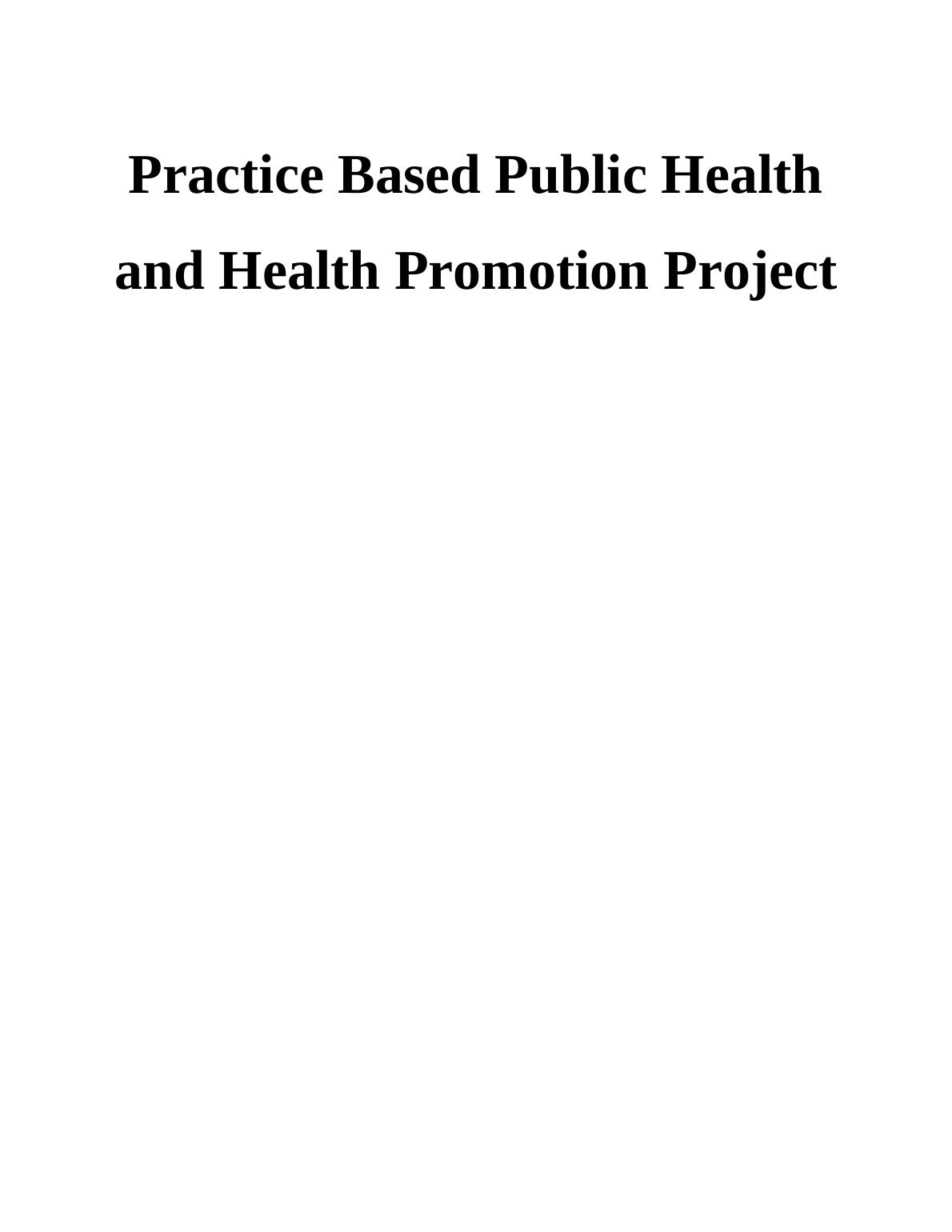
TABLE OF CONTENTSCHAPTER 1: INTRODUCTION....................................................................................................1Study background........................................................................................................................1Rationale......................................................................................................................................1Aim..............................................................................................................................................2Objectives ...................................................................................................................................2Project scope and public health area:...........................................................................................2CHAPTER 2: IDENTIFIED NEEDS .............................................................................................3Epidemiology of diabetes............................................................................................................3Social determinants and health inequalities influencing public health .......................................4CHAPTER 3: EVIDENCE .............................................................................................................6Service provisions and health strategies for the prevention and treatment of diabetes...............6Diabetes prevention program (DPP)............................................................................................7Effectiveness of diabetes health interventions.............................................................................9CHAPTER 4: INTERVENTION ..................................................................................................11Public health ethics....................................................................................................................11Settings for delivery of health intervention...............................................................................12Data collection...........................................................................................................................13Resources...................................................................................................................................14Stakeholder analysis...................................................................................................................14Time frame.................................................................................................................................14CHAPTER 5 CONCLUSION .......................................................................................................14REFERENCES..............................................................................................................................17
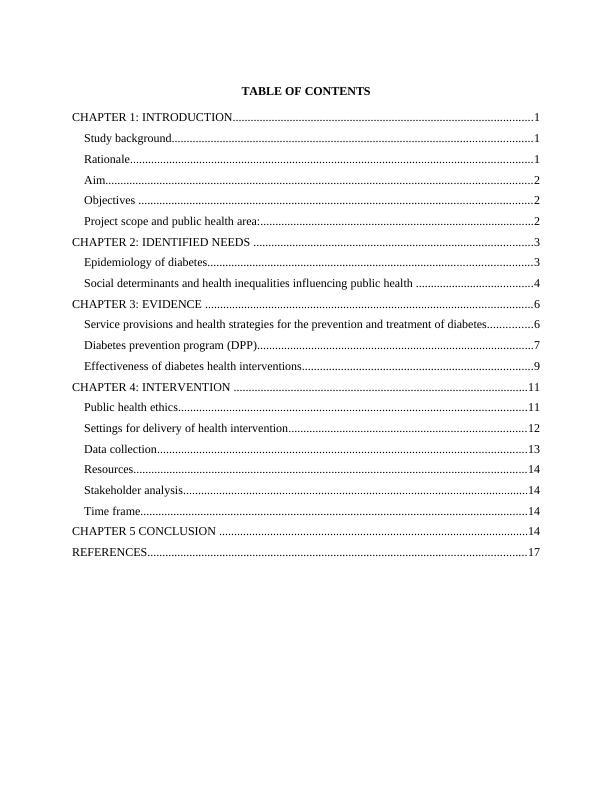
Title: Health inequalities in type 2 diabetes and to develop an intervention plan for improvingand preventing diabetes among obese people in Harrow borough of UK. CHAPTER 1: INTRODUCTIONStudy backgroundType 2 diabetes has been known as one of very common chronic disease and key publichealth issue in UK. Its prevalence has not only been increasing in UK but all over world as well.It has been estimated that currently there are more than 3.5 million people who are living withthe diabetes (Diabetes Prevalence, 2019). This includes both diagnosed and undiagnosed cases.It has been also predicted that if effective public health interventions will not be implementedthen by 2025 number of people with diabetes will increase to 5 million. One of the mostsignificant cause of high prevalence of diabetes is limited physical activities and unhealthy foodhabits which leads to obesity. Thus, obese people are at higher risk for both types of diabetes. UK health services and organisations are formulating and adopting several interventionsso that awareness can be increased among people. It is very essential that people must know theepidemiology and available health interventions for the prevention and treatment of diabetes. Itwill help UK government to lower the number of deaths and socio economical challengesobserved in the diabetes management (Ting, Cheung and Wong, 2016). Though a variety oftreatment methods are available but still majority of people remains unaware that they aresuffering from diabetes. The late diagnosis enhances the complexity and risk of deaths to people.Thus, it is very essential that health interventions are effectively applied to improve the publichealth issues. RationaleBoth types of diabetes have life long impact on the health achievements of an individual.However, particularly obesity is the most common risk factor for the type 2 diabetes. It has beenanalysed that in UK only 10% diabetic cases are of type 1 while the remaining 90% are of type 2(Marckmann and et.al., 2015). The obesity is not limited to any specific age group or gender.Instead, both adults and children are vulnerable to it. Apart from the unawareness, the lack ofaccess to health care services is also one of the reason which enhances the diabetes prevalence inUK. The key purpose for choosing diabetes as the public health issue for this research is that1
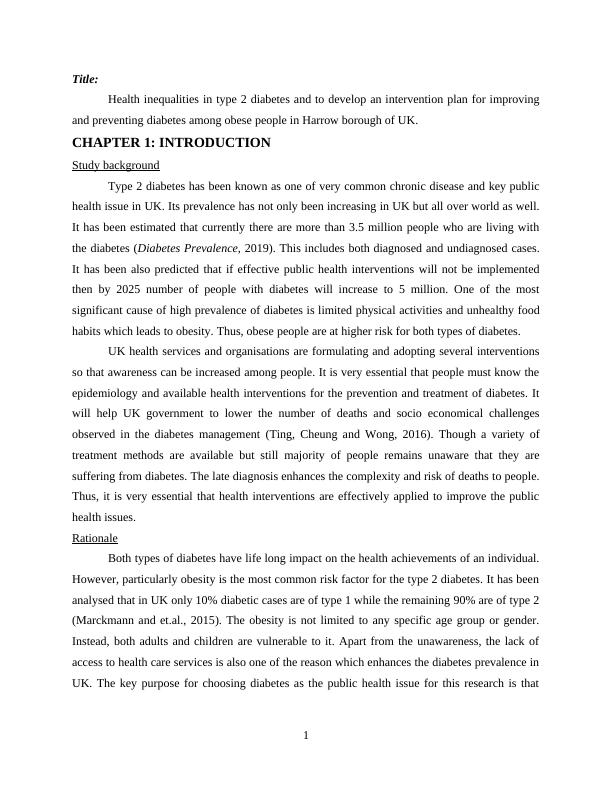
increasing obesity among people at very young age or even at children is the primary cause ofdiabetes. Thus, it is vital to identify the current social inequalities and how health careinterventions can address those inequalities (Shrivastava and et.al., 2017). The selection andevaluation of this public health inequality will help to understand the improvement needs ofhealth interventions. This type of research studies are very helpful to draw the focus of variousstakeholders towards the issue. Apart from rising the knowledge and awareness amongcommunities the study can also help health professionals to review the current policies andframework. Another reason for choosing this topic is that diabetes prevention is vital and itsprevention interventions must be applied from childhood only (Kayyali and et.al., 2019). Thestudy will prove to be an effective tool for evaluating the existing practices and quality ofservices. AimTo determine the health inequalities in type 2 diabetes and to develop an interventionplan for improving and preventing diabetes among obese people in Harrow borough of UK. Objectives To identify the factors causing health inequalities among obese people in Harrow borough.To prepare an intervention plan for preventing diabetes. Further study will be implementing thenew strategies and intervention process of determining the objectives and accomplishing task.This will help to continue the work or goals. Project scope and public health area:In order to address the public health issues, it is required that the health care serviceproviders must review the epidemiology and the other socio-economic factors which influencesthe disease prevalence. The Harrow borough of UK has the highest prevalence rate of diabetes inUK. The obesity is the main factor in the region which is responsible for such higher prevalenceof diabetes in the region (Diabetes care report London Borough of Harrow, 2018). Thebehavioural aspects and life style of the communities is also one of the critical element whichaffects the diabetes events. The report will help community members to understand the severityof diabetes. It will also encourage people to become more concerned about weight managementand healthy living so that diabetes can be prevented. The project will be a critical milestone in2
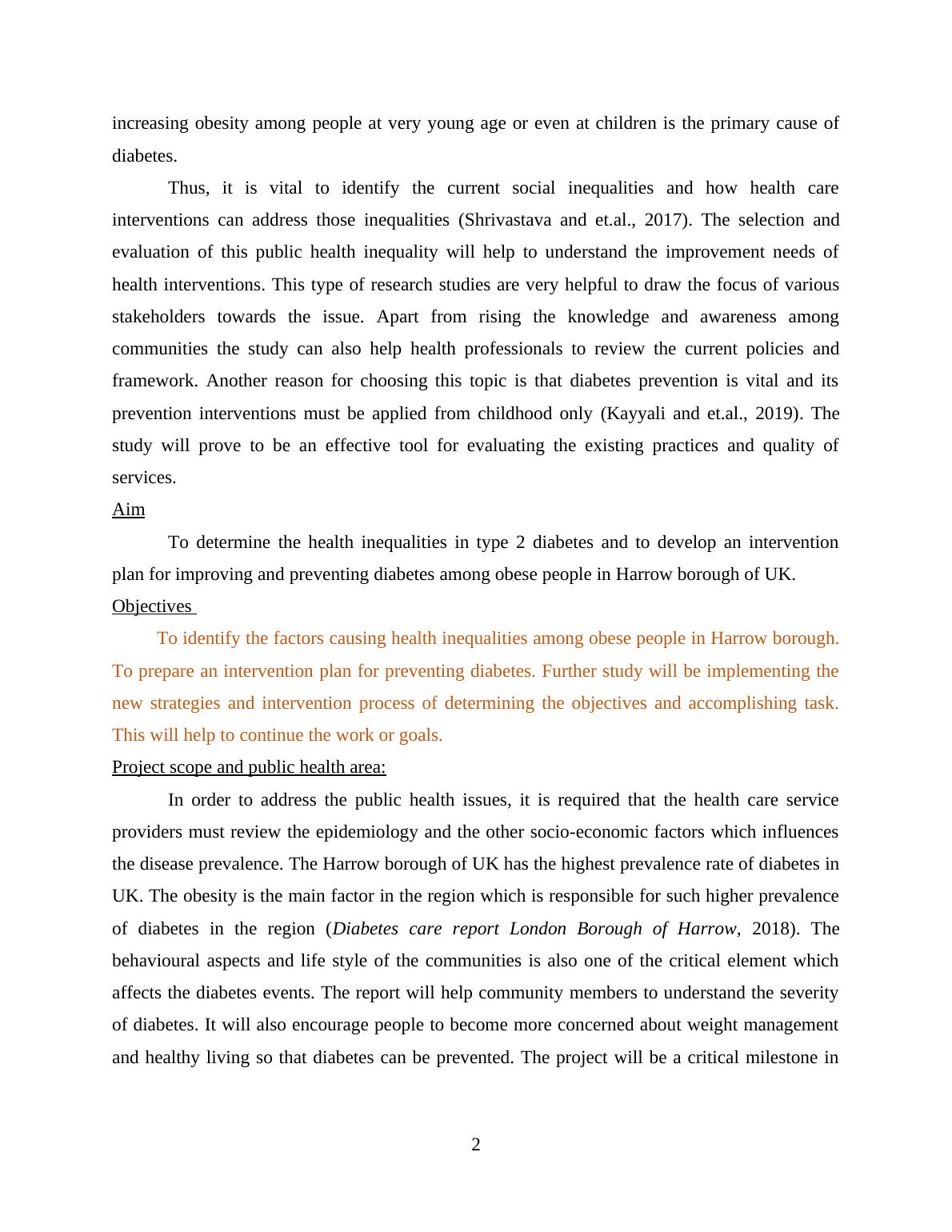
assessing the behavioural and economic factors which prohibits people in living a healthy andsustainable life. Further the scope of project is also not limited to communities or the healthcareorganisations. It is also beneficial for the researchers who desired to execute more detailedresearch on improving community health (Ntuk and et.al., 2017). The study will also explore thevarious healthcare interventions, available service resources, knowledge resources which lowersthe prevalence of the diabetes. CHAPTER 2: IDENTIFIED NEEDS Epidemiology of type 2 diabetesIt is not possible to prevent type 1 diabetes; however adoption of healthy life styles canhelp in delaying or preventing type 2 diabetes. In UK 68 % of men and around 59% of womenare obese. The obesity is also common among young children and 22% of the children in UK areoverweight or obese. Thus, there is high need to take actions for preventing obesity by imposingrestrictions on unhealthy or junk food. Diabetes is known as the chronic physiological changes in metabolic process due towhich blood glucose level is increased due to inability of the body in production or resistancetowards the action of insulin. On the other hand in type 2 diabetes there is an increase in theinsulin resistance in the body which prevents the body to produce insulin. There are several risk factors which increases the disease identification and occurrence.Contrary to this type 2 diabetes is influenced by the body mass index, lifestyle, hypertension,smoking, drinking habits, nutrition and low physical activities. It has been estimated that by2030, in Harrow type 2 diabetes will increase by nearly 45% (Diabetes care report LondonBorough of Harrow, 2018). Several studies have supported that in the modern life style peopleare not actively engaged in the physical activities. It affects body fat distribution and imbalancedwaist to hip ratio (Misra, 2015). The moderate or the minimum intensity of physical level along with the uncontrolledcalorie intake leads to the poor health outcomes among people (Shah and et.al., 2015). Apartfrom these attributes it has been also analysed that diabetes is also associated with thepsychological factors. Stress, poor psychological health and minimum social support has adverse3
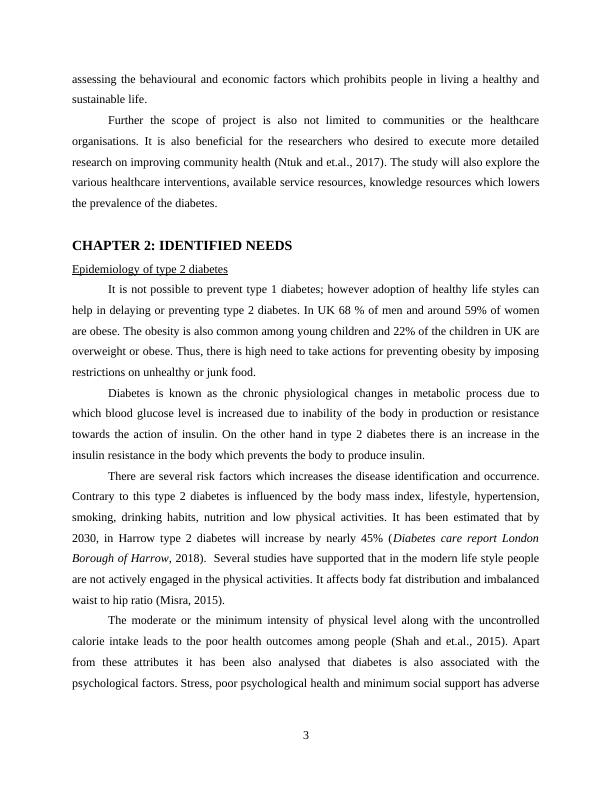
impact on the overall health of individuals. However, the new business objectives and makes thesystem more influencing. However, most of the diabetes associated deaths are the result of complications caused bythe diabetes which ultimately result in untimely deaths. The duration of the diabetes has beencritical element influencing the mortality rates (Mitchell and et.al., 2017). The younger peoplewho are diagnosed with the diabetes are more vulnerable to the deaths. Thus, for the prematuredeaths among young people type 2 diabetes is significant factor. It has been also evaluated thatthe people suffering from the diabetes are often at maximum risk of cardiovascular diseases andthe stroke. The stroke or heart attacks ultimately leads to the death. The most complicated aspectof the diabetes is that if influences the various organs of the body and with the passage of time itsseverity increases. The microvascular complications such as damage to nervous and renal system, blindnessas well as macro-vascular complications like peripheral vascular diseases and stoke are alsomatter of concern for the diabetes management plan (Lin and Wessel, 2019). The organ failure,chronic kidney diseases and other foot ulcers or infections need proper care and attention forassuring the comfort of the patient. Social determinants and health inequalities for type 2 diabetes in Harrow The health inequalities are result of not only individual factors but also of socialdeterminants. For improving the health outcomes these social determinants affecting diabetesmust be taken into account. Being a chronic disease diabetes involves high management and carecost. The availability of healthcare resources, funding and cultural attributes can change thediabetes prevention and management plan. The self-management is one of the most effectiveapproach for controlling the disease and to reduce the cardiovascular risks factors caused by thediabetes (Brooksbank and et.al., 2019). The individuals living with the diabetes or which are atrisk of the disease are affected by the cultural, social and economic attributes. For instance, the people who have easy access to health care services, routine glucoselevel check-up facility, effective education and health care support services tends to have betterhealth. The community support and the social encouragement affect the perspective of anindividual towards diabetes management. Social business groups are enable to measure theweight management or in order to consider the best social practice. For such groups physicalactivities or the weight management are mere obstacles in happy and care free life (Zimmet and4
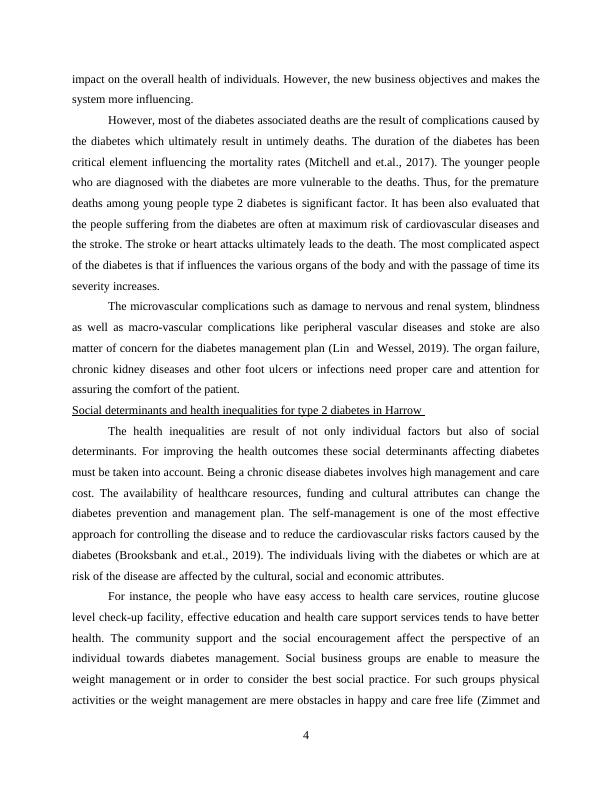
End of preview
Want to access all the pages? Upload your documents or become a member.
Related Documents
Promoting Health and Wellness Assignmentlg...
|14
|3323
|464
Health Inequalities in Dementia Patients and Intervention Planlg...
|24
|8401
|78
The Impact of Diabetes on Society and Human Healthlg...
|9
|2772
|144
Community-Based Interventions for the Prevention and Management of HIV: A Case Study of Queensland, Australialg...
|28
|6463
|151
Diabetes Health Promotion Intervention in London Borough of Hellingdonlg...
|1
|1824
|125
Public Health | Assignment | 1lg...
|20
|4485
|14
